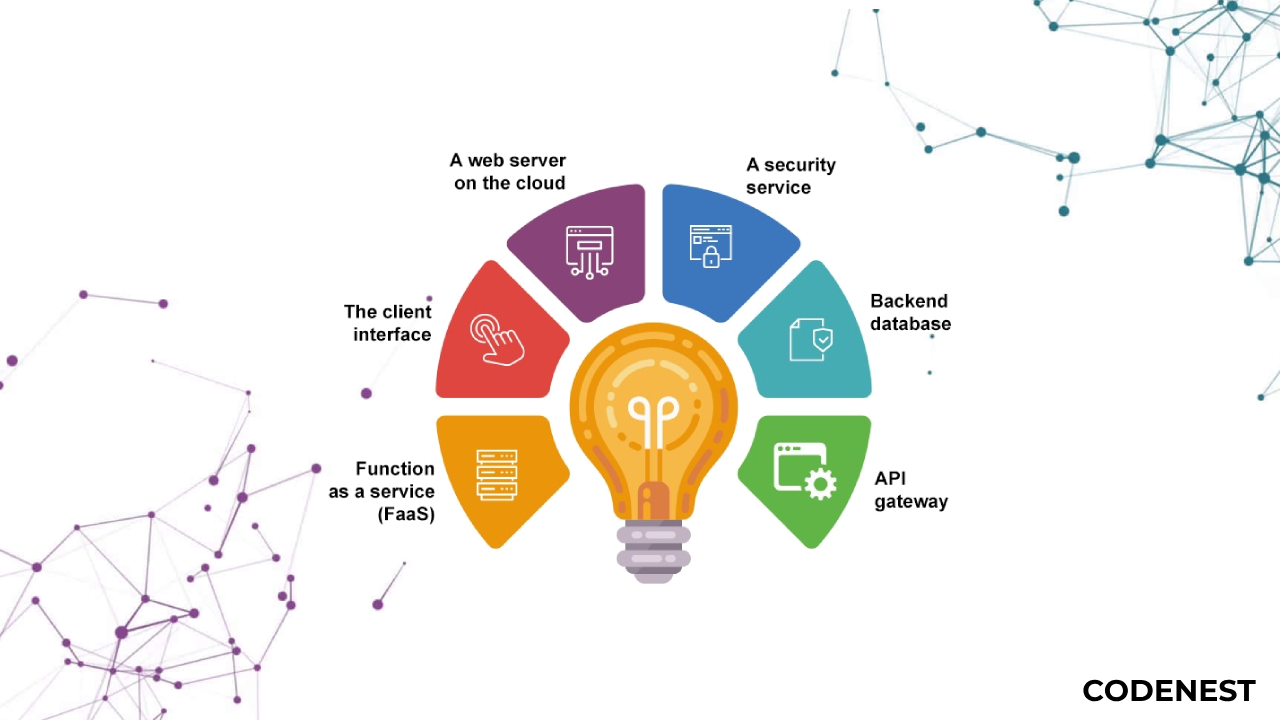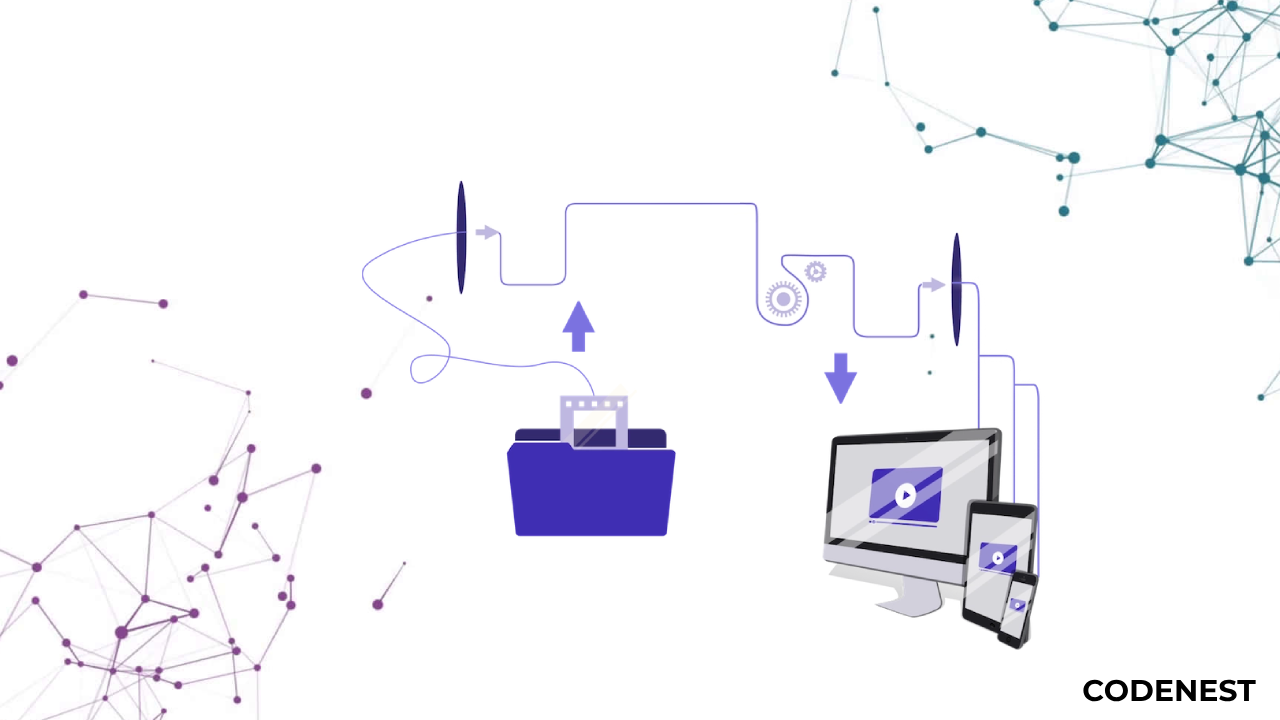As organizations and their technological landscapes continue to evolve, the management of complex architectures poses a constant challenge. The traditional approach of becoming adept at handling intricate platforms has shifted towards a more streamlined focus on application development. A novel solution has emerged – serverless architecture. In this article, we delve into the depths of serverless architecture, exploring its definition, benefits, limitations, and its relevance for diverse use cases.
Understanding Serverless Architecture
What is Serverless Architecture?
Serverless architecture represents a paradigm shift in how companies build and run applications. The essence lies in freeing development teams from the burdens of infrastructure management, encompassing tasks such as provisioning, scaling, and maintenance. The scalability is automatic, and expenses are incurred only based on actual usage. Notably, Amazon Web Services (AWS) has played a pivotal role in the widespread adoption of serverless architecture, with 40 percent of organizations embracing this approach, as revealed by a recent O'Reilly survey.
Challenges and Concerns
While the allure of serverless architecture is compelling, not every organization is ready to fully embrace it. The survey highlights reservations about security, fear of the unknown, and concerns about having the right expertise within the team. It's crucial to recognize that even though serverless is designed for simplicity, proficiency with the tool requires a certain level of expertise.
Unveiling the Benefits
1. Decomposing for Better Observability
One of the primary benefits of serverless architecture lies in the decomposition of applications into smaller components. This decomposition enhances observability, as smaller components make it easier to understand, modify, and troubleshoot.
2. Event-Based Architecture
Serverless operates on an event-based system, fostering independence among different components of an application. Unlike stream-based architectures, where a failure might impact the entire system, event-based systems ensure that failures are isolated to specific events.
3. Accelerated Innovation and Flexibility
The speed of deployment is a pivotal factor in favor of serverless architecture. By eliminating the need for infrastructure setup, applications can be deployed rapidly, enabling scalability and flexibility. This agility proves especially valuable in times of urgent pivots, such as those demanded by the global pandemic.
4. Cost Reduction
By outsourcing server and database management, serverless architecture reduces internal infrastructure costs significantly. The extent of cost savings depends on the specific use case, making it a financially viable option for many organizations.
5. Enhanced User Experience (UX)
With architecture concerns lifted, development teams can dedicate more time and resources to improving user experience. Serverless architecture facilitates a shift in focus towards the user interface, ensuring that applications meet high standards of digital experience.
Navigating the Limitations
1. Long-Running Application Inefficiencies
While serverless excels in many aspects, long-running workloads can incur higher costs compared to traditional dedicated servers. Certain applications may find dedicated servers more efficient for sustained tasks.
2. Third-Party Dependency
Relying on a serverless architecture means being dependent on the service provider. Lack of full control and unexpected changes in the platform can pose challenges for organizations with specific operational requirements.
3. Cold Starts
The concept of "cold starts" arises when a serverless platform initiates internal resources, causing a delay in handling the first function request. This can be mitigated by keeping the function in an active state through periodic requests.
Exploring Use Cases
The versatility and scalability of serverless computing make it applicable to various use cases across different industries. Some notable scenarios include:
- Web Applications and Microservices: Serverless functions offer independently scalable components, providing granular control and easy management compared to monolithic setups.
- APIs and Backend Services: Serverless functions effortlessly scale to meet API demand, offering a responsive and cost-effective backend solution.
- Data Processing and Transformation: Serverless activates on events or schedules, enhancing responsiveness and eliminating delays associated with persistent server-based processing.
- Real-Time File Processing: Automatic execution of file transformations upon upload showcases the efficiency of serverless architecture.
- Chatbots and Virtual Assistants: Dynamically allocating resources based on user interaction volume ensures responsiveness without the complexity of server scaling.
- Authentication and Authorization: Serverless functions provide a lightweight method for user authentication, avoiding constant resource consumption.
- Scheduled Tasks and Batch Jobs: Serverless excels in executing scheduled tasks without the need for permanent server presence, reducing resource waste and operational costs.
- Prototyping and Rapid Development: Developers benefit from serverless architecture for experimental code development without concerns about provisioning server capacity.
Serverless vs Microservices: A Synergistic Approach
Contrary to perceiving serverless and microservices architectures as mutually exclusive, they can complement each other effectively. Serverless architecture provides an ideal hosting environment for microservices, aligning with the efficiency and agility philosophy of microservices. The integration of serverless technology with a microservices design allows teams to focus on developing robust functionalities while outsourcing operational concerns.
Is Serverless Architecture Your Solution?
Serverless architecture emerges as a viable option for deploying cloud applications, particularly in event-driven scenarios with components running in short, sporadic bursts. This model ensures payment only for actual compute time, offering significant cost savings for functions not requiring continuous server execution. For workloads experiencing variable traffic patterns, such as those influenced by promotional events or seasonal spikes, serverless architecture effortlessly scales up and down to meet demand efficiently.
In conclusion, serverless architecture is a powerful tool in the arsenal of cloud deployment options. Its potential to streamline development, enhance scalability, and reduce costs makes it a compelling choice for organizations seeking innovative solutions to modern challenges. However, careful consideration of limitations and a thorough evaluation of specific use cases are crucial before making the leap into a serverless future.



